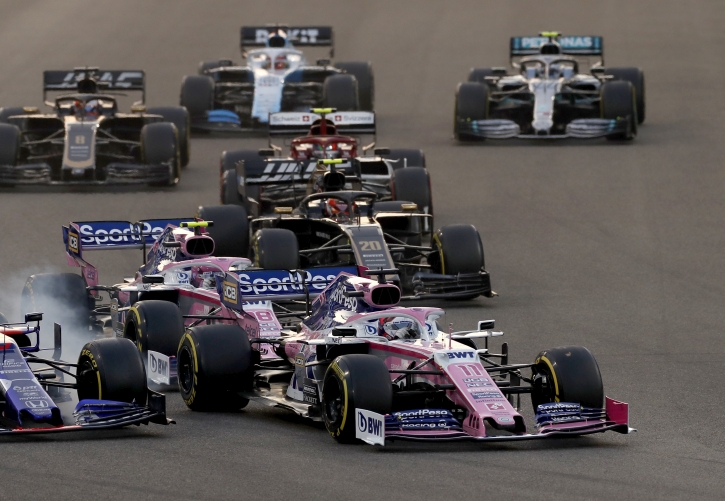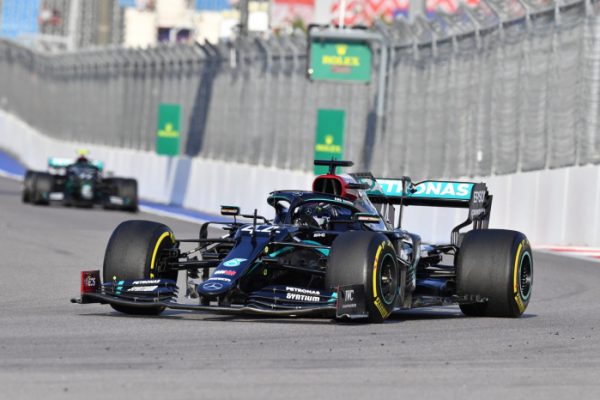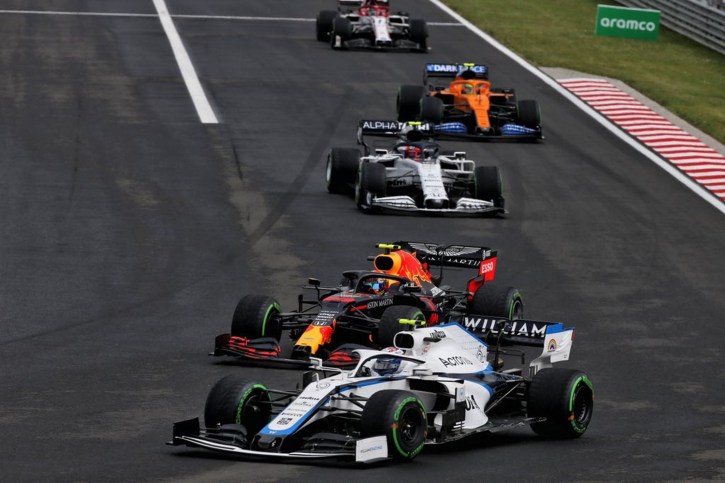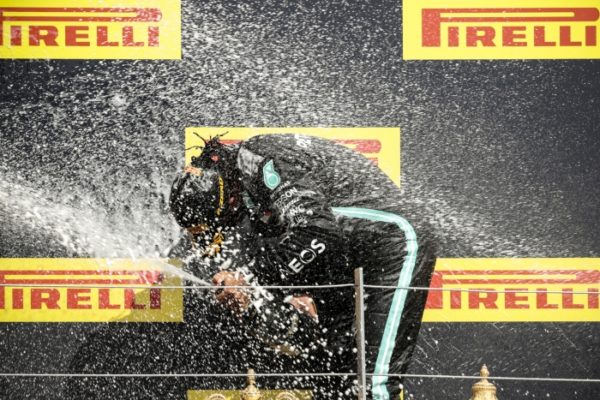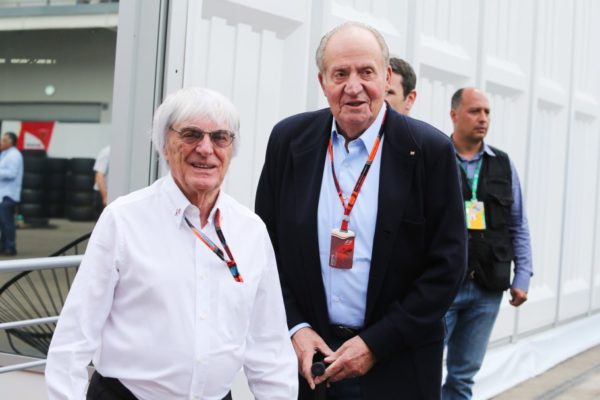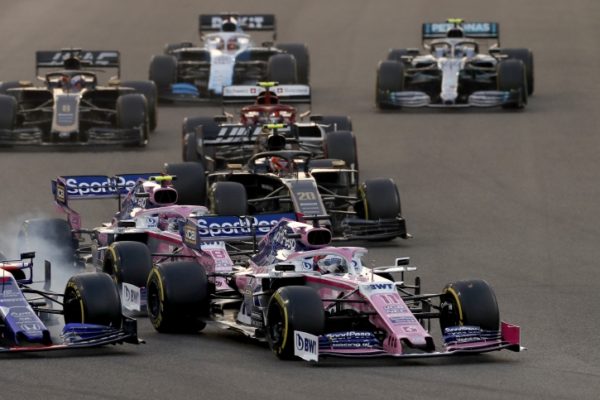Around mid October of every year Formula One fans lament the end of another season. Then, come March, we all sit in front of the television or, in the case of the lucky few, trackside, eagerly waiting for the five lights above the starting grid to go out and signal the start to another thrilling season of Formula One. In between these two events a succession of dry months prevail, providing only scraps in the form of testing reports, silly season speculation and debate about what the new season will bring. Not much compared to the roar of twenty V10’s screaming along at 19 000 rpm (now to be replaced with V8’s screaming along at more than 20 000 rpm of course).
Enter Sheikh Maktoum Hasher Maktoum Al Maktoum – the Founder, President and Chairman of the A1GP Series. His name is a mouthful yes but the man has a vision to entertain us during the off-season and that makes me like him already. He dubs his vision “The World Cup of Motorsport” and, with a sense of drama, every race is kicked off with the words “Gentlemen, for the pride of your nations, start your engines!”.
By now I think I can safely assume that the average reader of this article at least knows what A1 is and the basics surrounding the sport – every country has a car (well two cars but more of that later) that is effectively the same as every other car there, powered by an engine that is effectively the same as every other engine there. They all wear slicks in dry weather and grooved tyres in wet weather. All the slicks are the same, all grooved tyres are the same. What is supposed to differentiate team from team, country from country, is the driver of the car.
Readers of this article, however, are likely to be the very Formula One fans that Sheikh Maktoum aims to entertain, so we’ll focus on a comparison with our favourite sport, rather than trying to launch into an in-depth explanation of A1.
Before we get into the detail, let’s look at speed – surely the most fundamental aspect of any form of motorsport. We watch Formula One above all forms of motorsport because it remains, despite the efforts of the FIA to slow it down and make it cheaper, its pinnacle. There is no vehicle out there powered by an internal combustion engine that can go around the average racing circuit faster than a properly set up Formula One car (and I’ll exclude ovals here – they don’t count!). Not a Champ Car, not an Indy Car, not a GP2 car, not a MotoGP bike. So how does A1 compare?
Forget about acceleration, top speed and lateral G-force statistics. Effectively they mean nothing as the objective of both series as to get around a circuit in the fastest possible time. The best reference we have at the moment is the Sepang circuit in Malaysia, where both series have raced this year. In their first attempt the fastest lap time any A1 car posted was 1’55.373. The fastest Formula One race lap this year? 1’35.483 as posted by Kimi Raikkonen. That is almost a twenty second difference – words like huge, massive, immense, etc all come to mind. Think about it – the fastest F1 driver will lap the fastest A1 driver within four and a half laps if they were ever to race at Sepang. Or, if the F1 driver pleases, the A1 car can take off while Mr F1 is trackside. He can then calmly walk to his car, get in, take off and easily catch up with the A1 car on lap one.
So far it must be said that A1 is not doing particularly well by comparison. However, it’s not all about raw pace is it? No. Formula One has come under much criticism in the recent past for a number of reasons and the A1 series focused on addressing these.
First and foremost on every Formula One aficionado’s mind has to be the recent lack of overtaking in the sport. It’s been an issue for years now but never before so great as in 2005 when the new tyre rules saw drivers too concerned about whether their tyres would last the race to really attack. The changes in aerodynamic rules also caused the cars to be more sensitive to dirty air. How many times have we seen a patently faster package being held up by the slower car in front of him and being able to do absolutely nothing about it?
A1 cars are equipped with slicks and aerodynamics are limited. This gives them loads of mechanical grip and makes them less reliant on clean air to get around corners fast. They also have a “power boost” function that raises the rev-limit and re-maps the engine management system to add 30bhp to the engine’s power output for as long as the driver’s foot is kept flat in the accelerator. The number of times this can be used is of course limited. The results of these measures? Opinions vary but the simple fact is we see a lot more overtaking in A1 than we do in F1 – especially in the feature races. Aside from Sepang, the sprint races have not provided as much overtaking as drivers try to conserve their race car for the feature race – preferring to race with what they know rather than risk the unknown factors that the spare car may yield. On this score, however, A1 as succeeded as well as could be expected.
One of the biggest driving forces of debate amongst F1 fans is their choice of driver. Everyone has an opinion of who is the fastest, the most skilled, the most balanced, the best all-round, etc. There are many reasons why this debate will never be settled. The design of a car affects its characteristics – whether it over steers or under steers, how well it rides kerbs, etc – a car’s behaviour might suit one driver and not another and hence the driver that the car is more suited will look faster in that car. There is also the undeniable fact that some cars are so much faster than others, while some drivers may have incredible raw pace but are not skilled at setting up a car for the conditions on race weekend. A1 attempts to remove at least two of these elements by allocating an identical car and engine to every team. Set-up is limited to suspension settings, gear ratios and “aerodynamic settings” – effectively wing level. All this, they say, is there to be “changed by the team to best suit the driver’s style” (although it would seem that the car’s all have a slight tendency to over steer no matter what the settings). Have they succeeded? The truth is that the jury’s out on that one. France, for instance, has by now won eight races in a row (four events) with two different drivers. It’s hard to believe that France would have two dominant drivers. Just viewing the race it is obvious that the likes of Nelson Piquet Junior and Neel Jani are both fast drivers, yet in the last four events they had to make do with less than first place every time. This indicates that the limited amount of set-up available on an A1 car does in fact make a very significant difference and the French team has mastered the art quickly.
Qualifying. That simple word is enough to make the blood boil of many a Formula One driver and spectator. The FIA seems to be unable to agree with themselves on a format. From 12 laps per one hour session to one flying lap to two flying lap aggregates on two days to two flying lap aggregates on one day to next season’s knock-out system, the format seems to become ever more complex in the quest to make it watchable again. A1’s quali format is not that simple to understand but it guarantees watchability with its one hour, four session format in which every team has to complete at least two flying laps. An interesting twist to A1’s qualifying format is that the fastest driver for any given team (they are allowed to use up to three) does not necessarily have to race – as long as the race driver sets a time within 102% of the team’s fastest lap. This opens up a possibility that no team has really attempted to make use of so far. Imagine a team could sign a man like Jarno Trulli or Mark Webber who is a demon qualifier and plants the car a full two or three spots up the grid from where it rightfully belongs. A different driver – who is better over a full race distance, can then drive the races on Sunday, benefiting from the fast times set by the qualifying specialist. I, for one, wait with bated breath for someone to start using this rule to their advantage.
Then there is the ever present issue of a car or driver who dominates a race to start taking it easy once a significant lead has been established. How many times did Raikkonen, and even at times Alonso, start cruising as of mid-race this season? How many times has Michael Schumacher done it in previous seasons? A1 has thrown an interesting twist into the points system to reward the driver who goes hell for leather all race long – an additional point for the fastest lap of the day. Due to this the race winner runs the risk of the runner up equaling his points tally for the race if the runner up takes fastest lap. Personally I love this rule and I believe it has proven very effective.
On the subject of points, there has been much criticism of the points system as introduced in 2003, which rewards consistency rather than the “win or nothing” attitude. Some like it of course and so it proves do the organisers of A1. They have gone even more towards the consistency approach and the winner takes only one more point than the runner up, while all places down to tenth is rewarded. This makes one retirement a disastrous matter as you could take up to five events or ten races to make up for it. Whether this is a good or a bad thing, or makes for spectator value, is hard to comment on. Different philosophies will result in varying opinions.
Team orders have also been under fire many times – some teams only implementing them when one driver no longer has any mathematical chance of winning the championship while others go as far putting more focus into on of the two cars or designing a car specifically for the driving style of one of the two drivers. The fact that there is only one driver per team out there puts paid to any possibility of this. That said, the driver really is not at the core of the focus in A1 anyway – it is the team, or country, that wins the championship or not, regardless of which driver was used.
Aside from the main points of debate and spectator value, there are other differing factors worth a mention here. The first of these would be pit stops. While they’re not a factor in sprint races they have ruined many a feature race for many a team. The number of technicians allowed in the pit are limited and there seems to be the odd niggle with the equipment still, resulting in some strong runners falling radically down to grid because of a cross-threaded wheel not or something along that line. Switzerland and France both seem to have the pit stops down to a fine art but most teams struggle intermittently. Expect these problems to go away as the lagging teams realize how much their lack of focus in this area is costing them and equipment niggles are addressed.
Budgets also cannot differ vastly in A1 – aside perhaps from money spent on marketing the team. Testing time is limited to the slots allowed by the organisers and obviously the team can do not development on the car.
Finally, the driver issue. Many traditional F1 fans are frustrated by the fact that countries are being commentated on and not teams or drivers. Every weekend sees a potentially different driver and one has to establish who drives for every country prior to the start of the races. Everyone supports a team and a driver in F1, yet the point of the World Cup of Motorsport is to support your own country, your own nation. It’s surprising just how fundamental the mind shift is this has caused dissent amongst F1 fans – rightly or not. Whether we’ll all get used to this is a point of contention of course but it is almost sure to end up affecting viewership.
Viewership seems to be on the increase all in all and this is a good thing. Whether it is sustainable or not will depend largely on whether viewers get used to, and start to like, the country vs. country format and on whether the niggles that, at times, make the sport seem like a bunch of amateurs paying slot cars are sorted out quickly. For the time being I am watching every A1 race. Whether this will still be true one year from now remains a mystery.
Edu de Jager
DailyF1News.com
For all the columns by this author, click here
